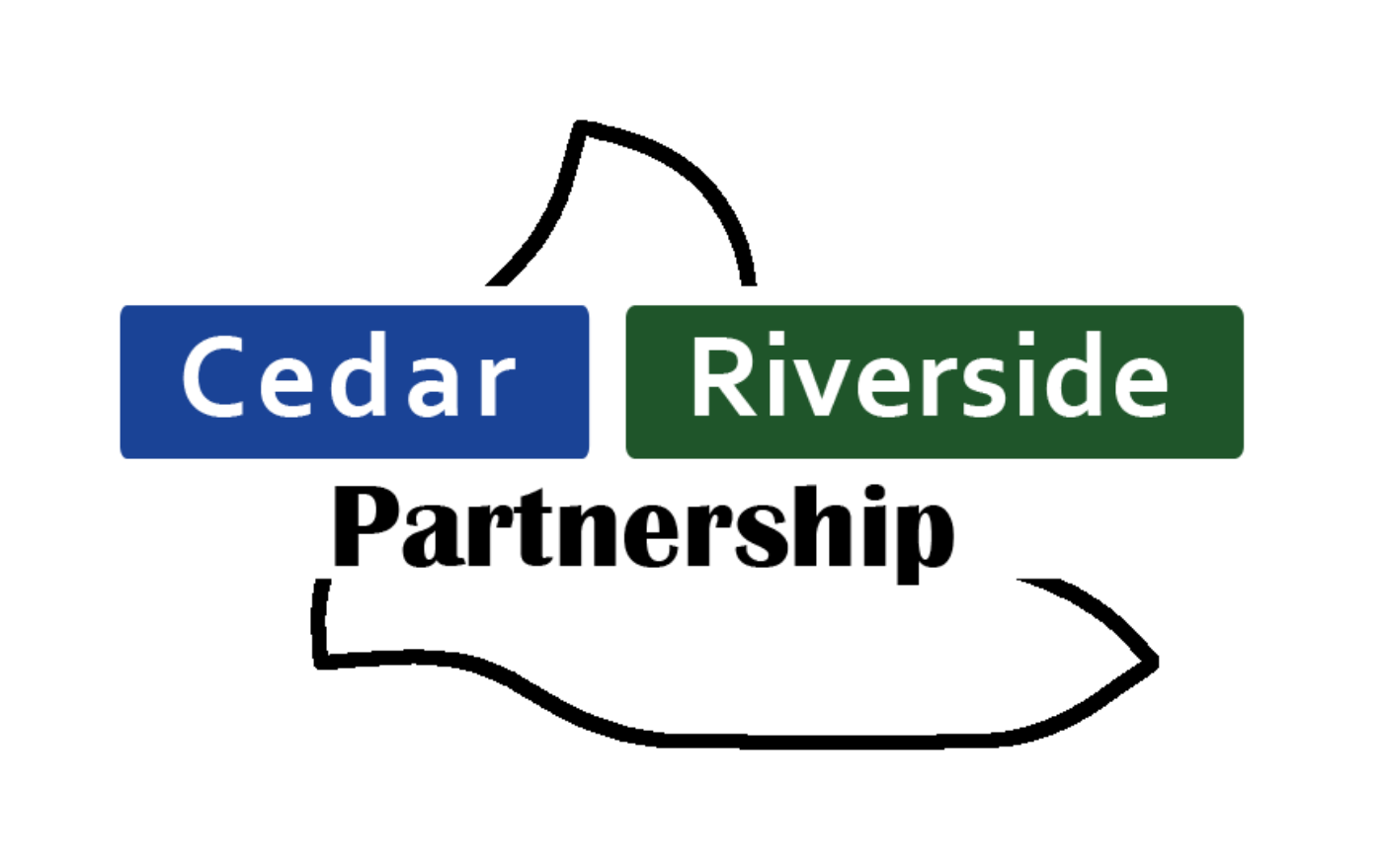Augsburg Scrubs Camp: Photo Slideshow

The first four blocks of Scrubs Camp included About Asthma, Biomedical Engineering, Pharmacy Careers, and What is an Anesthetist? Groups of approximately 20 high school students rotated throughout the day between each block.

Milt Green, Certified Registered Nurse Anesthetist (CRNA) at Regions Hospital, gave a short presentation about becoming an anesthetist before allowing the students to ask him questions about his career. Green encouraged the students to come and shadow him at Regions Hospital after graduation.
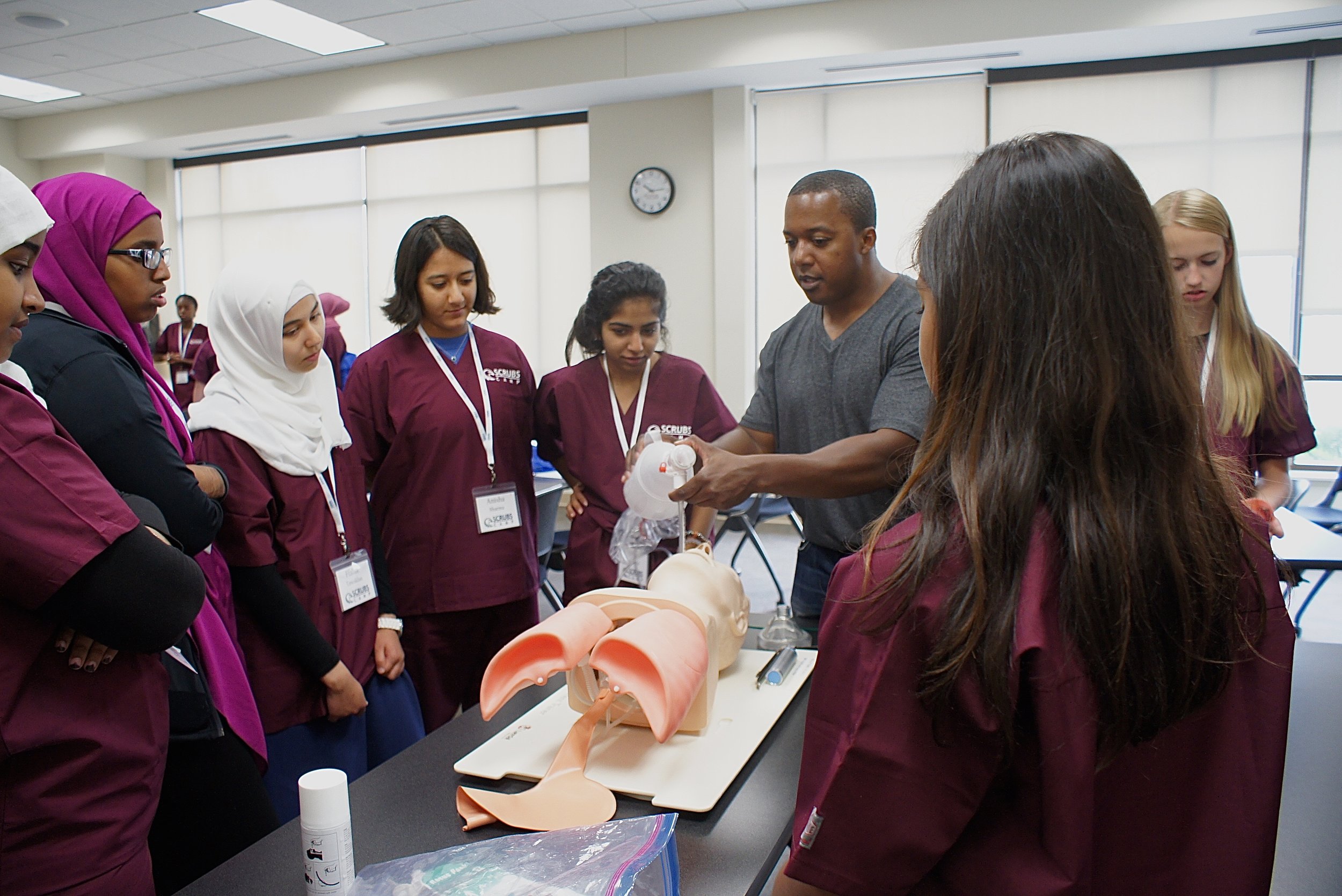
“You never know until you see the profession yourself,” said Green. When asked about his favorite part, Green said that he enjoys work with trauma patients. After the presentation, students experienced putting a patient under anesthesia using mannequins and medical tools.
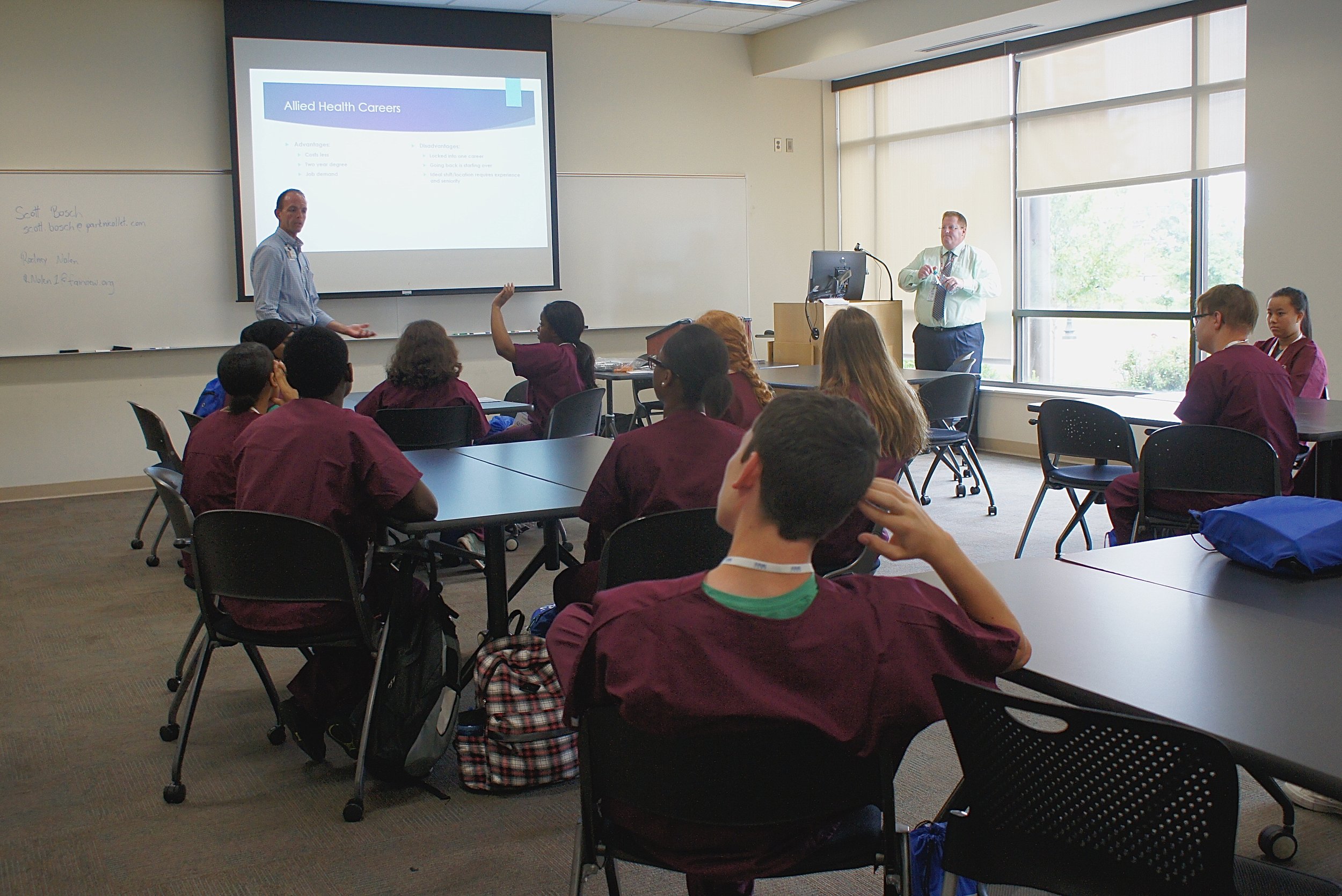
Scott Bosch, Manager of Clinical Engineering Services and Medical Technology at Park Nicollet Health Services, and Rodney Nolen, Manager of Biomedical Engineering at Fairview Health Services, talked to the students about biomedical engineering and allied health careers. “Not everybody needs a four-year degree to work in a hospital,” said Bosch.
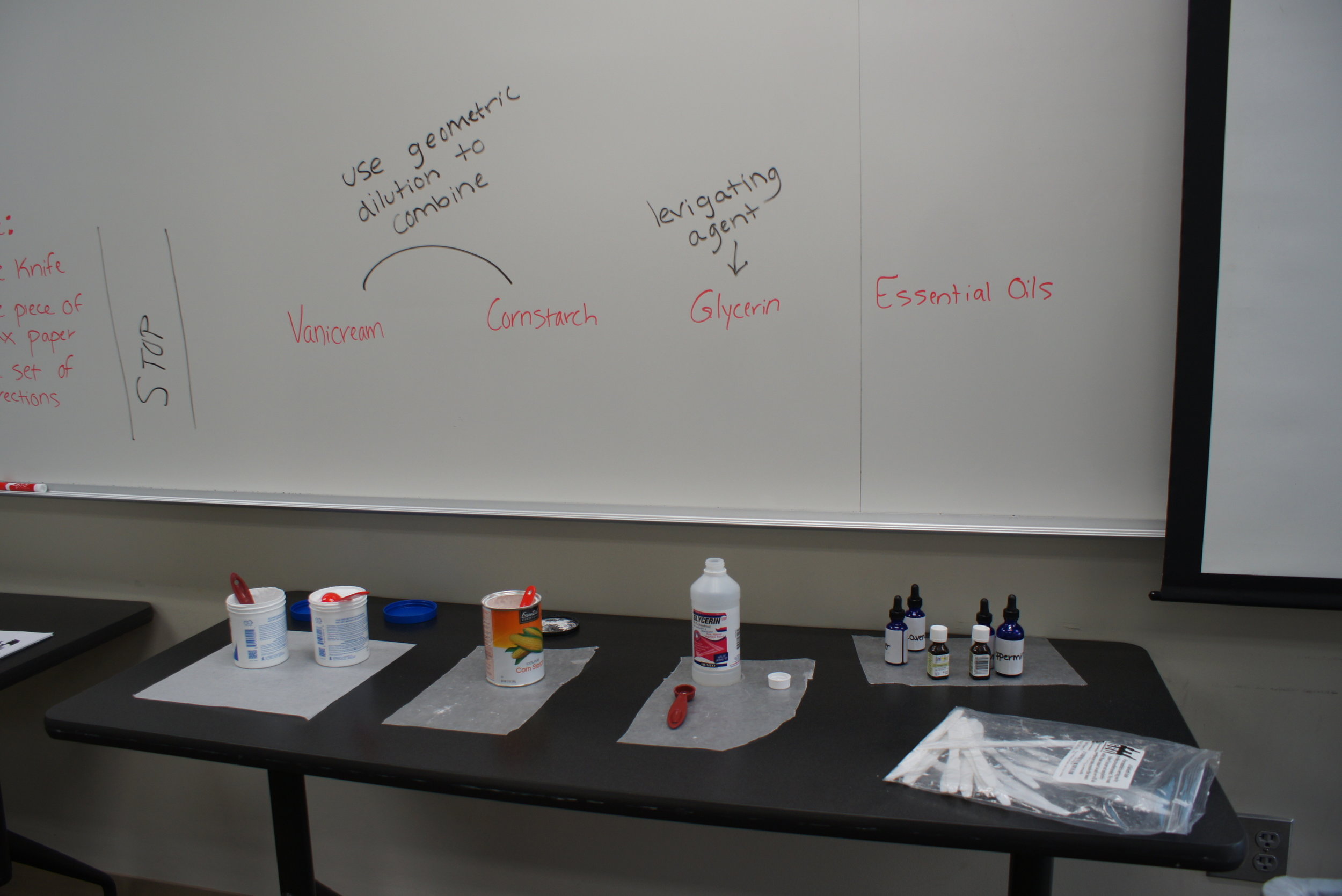
Shannon Greely, Recruiting Coordinator at the University of Minnesota College of Pharmacy, talked to the students about the timeline for pharmacy school and what to expect in a pharmacy career. Students also completed a hands-on compounding activity using Vanicream, cornstarch, and glycerin to create a custom medication. Jenny Kelley, Clinical Care Supervisor and Asthma Program Coordinator at Hennepin County Medical Center, presented information about the significance of asthma and pursuing a career around asthma.
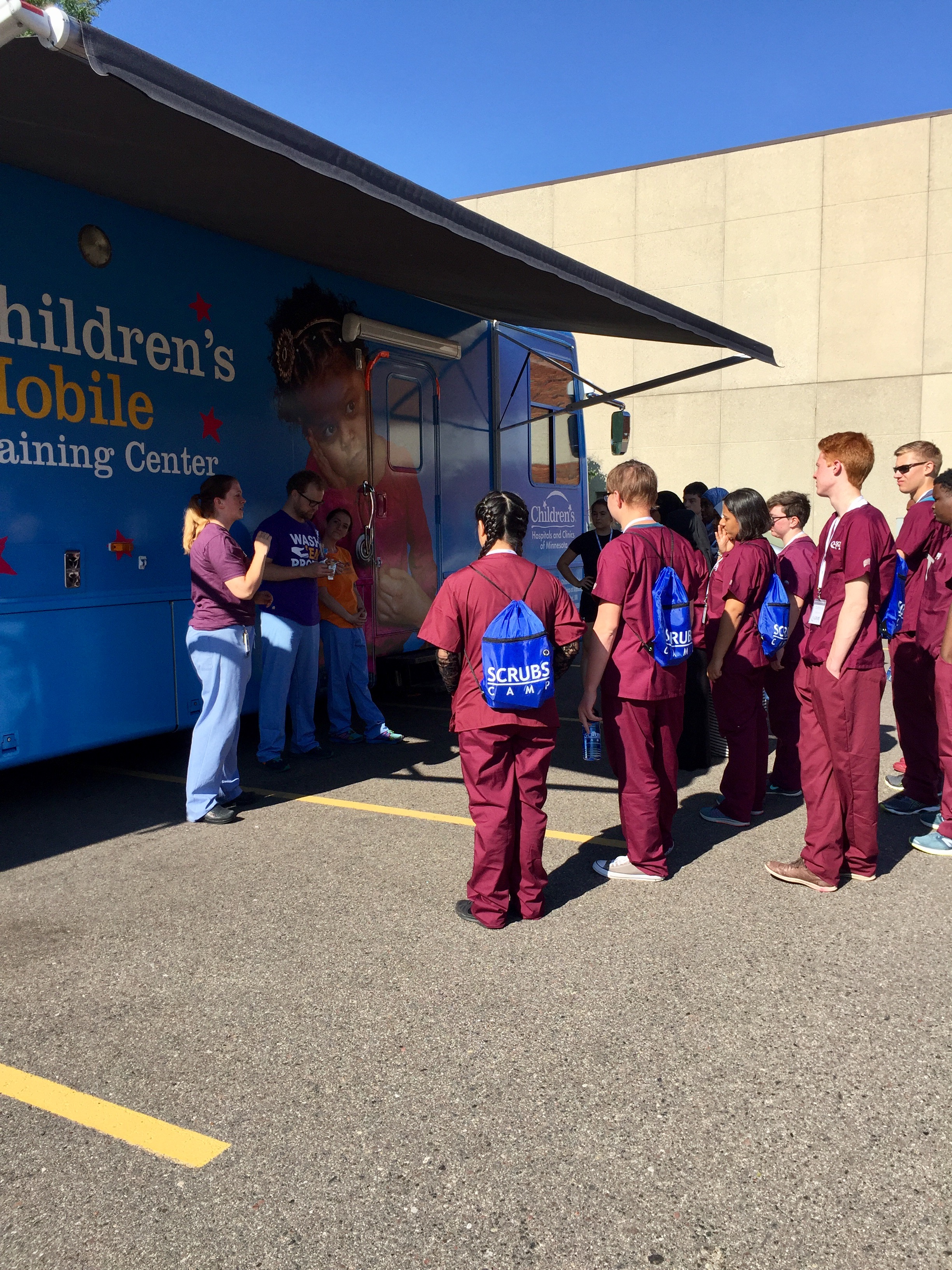
On day two of camp, students got the chance to try their hand at pediatric care. Children’s hospital was on-site with their training simulation van. The advanced equipment offered students the opportunity to train like practicing healthcare professionals.
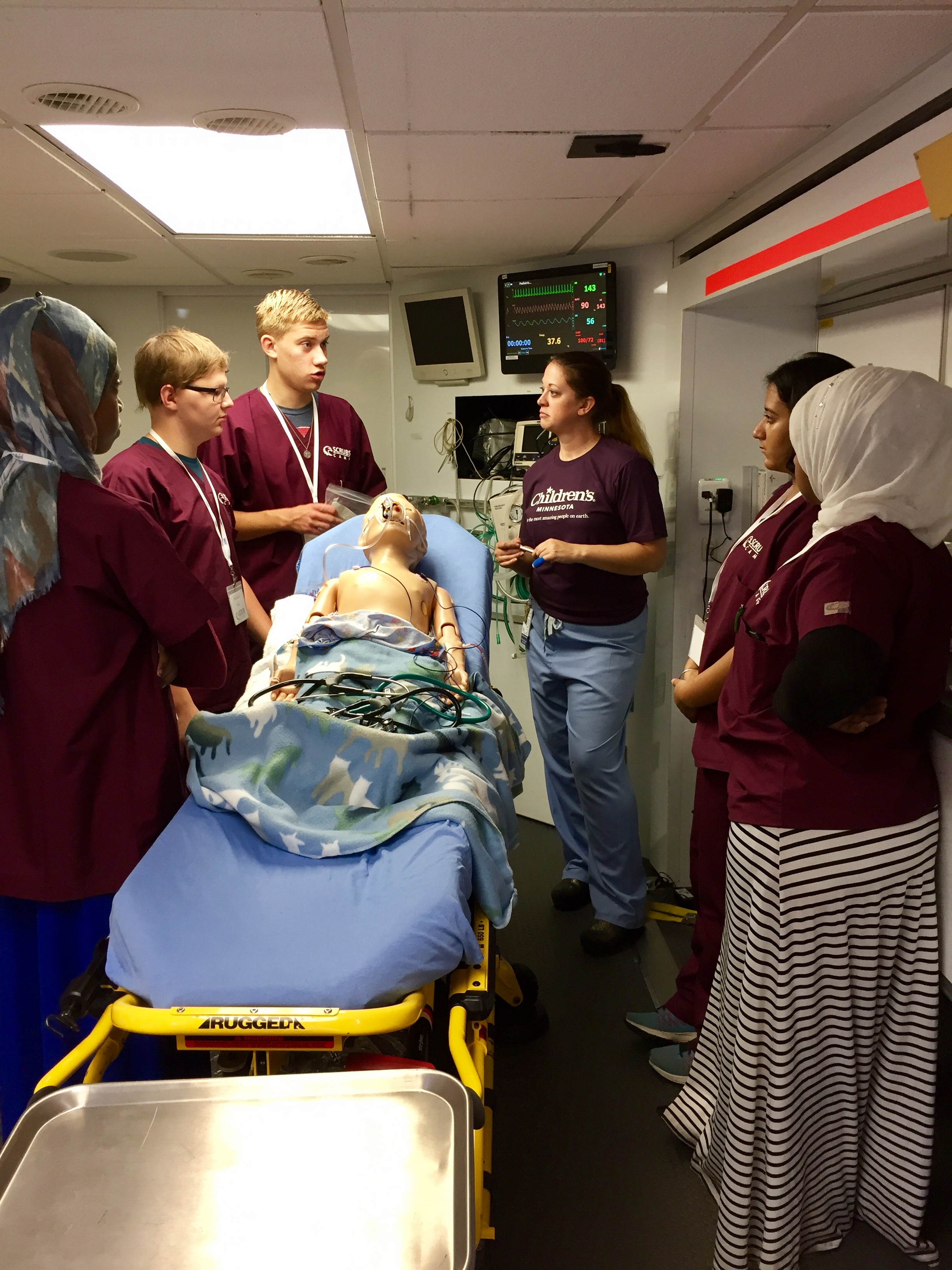
“Our doctors use this van to practice their skills, so they can deliver the best patient care possible,” said the pediatric nurse. The simulation van was equipped with a state-of-the-art mock emergency room and technology that allowed the students to monitor the neurological and physiological symptoms of their four-year-old “patient".
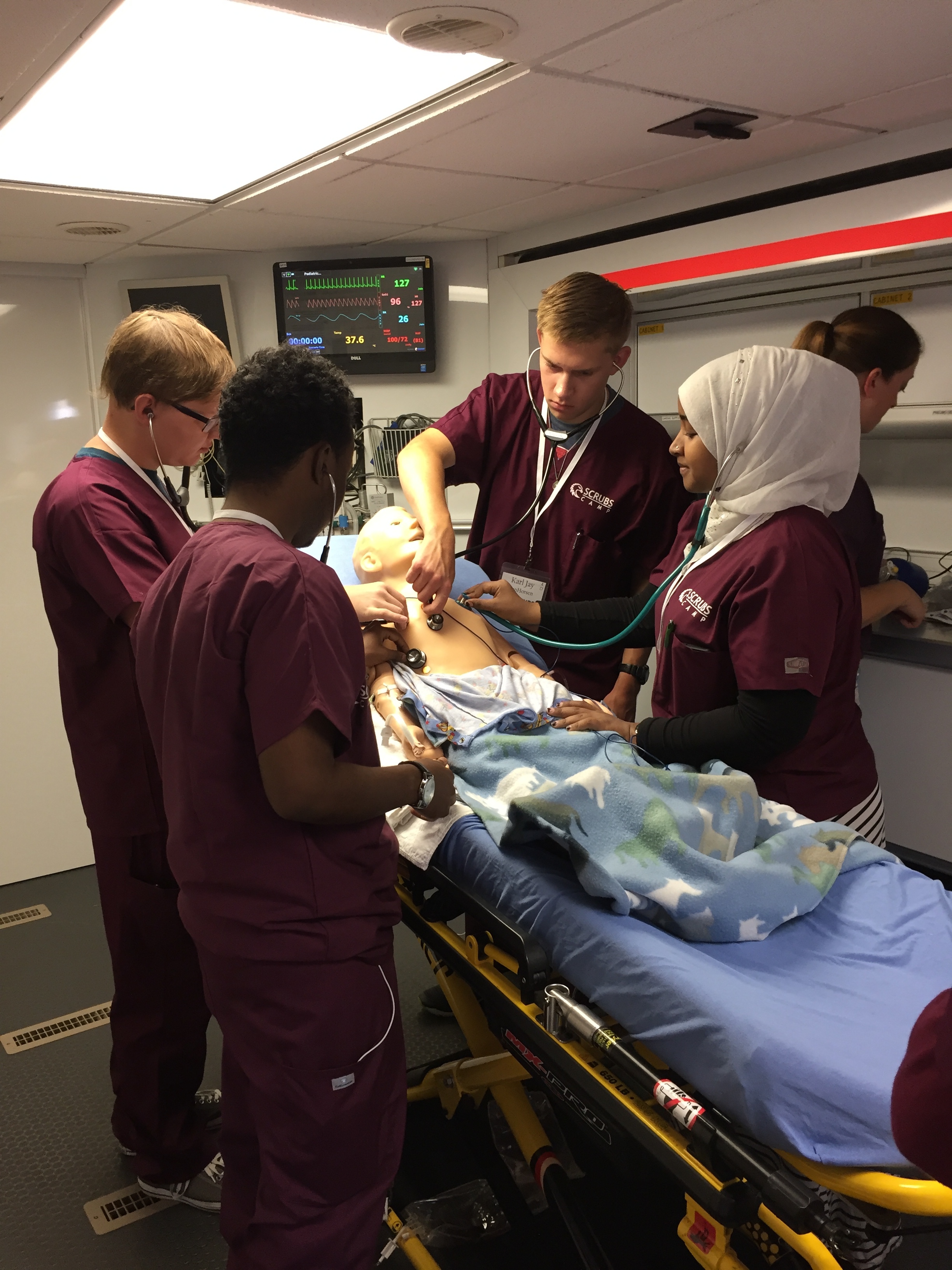
The campers took turns checking for breathing and offering diagnoses. After diagnosing their patient with pneumonia and trouble breathing, the students got to administer a sedative and paralytic, and even inserted a breathing tube.
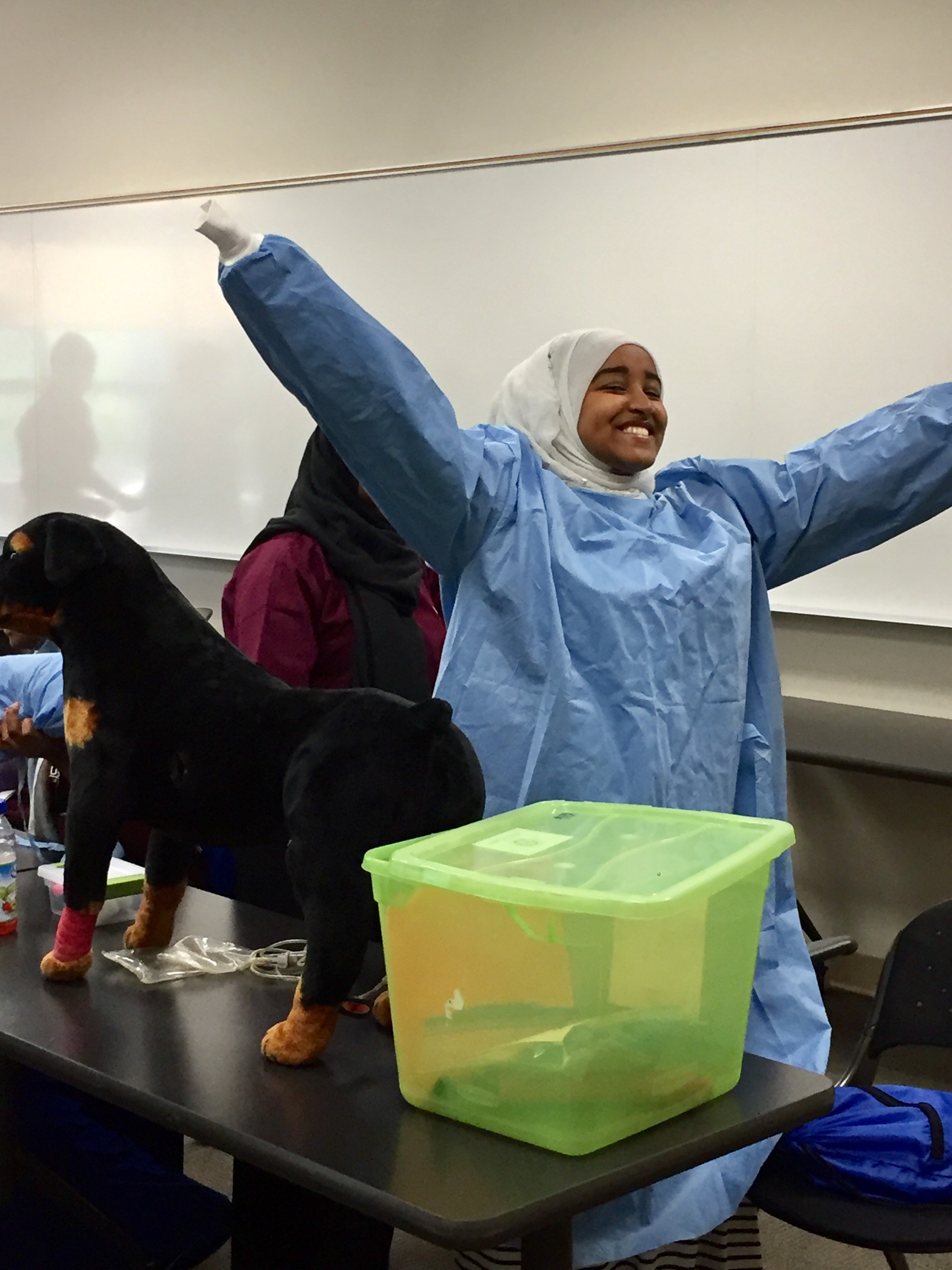
The mission of Scrubs Camp is to foster a pathway to careers in health care by educating students and exposing them to the variety of careers available in the field. The diverse blocks offered at the camp ensure that there is “something for everyone.” Three third-year students from the University of Minnesota College of Veterinary Medicine taught the campers about providing medical care to animals. First, the volunteers gave the students a brief overview about the differences between caring for humans and animals.
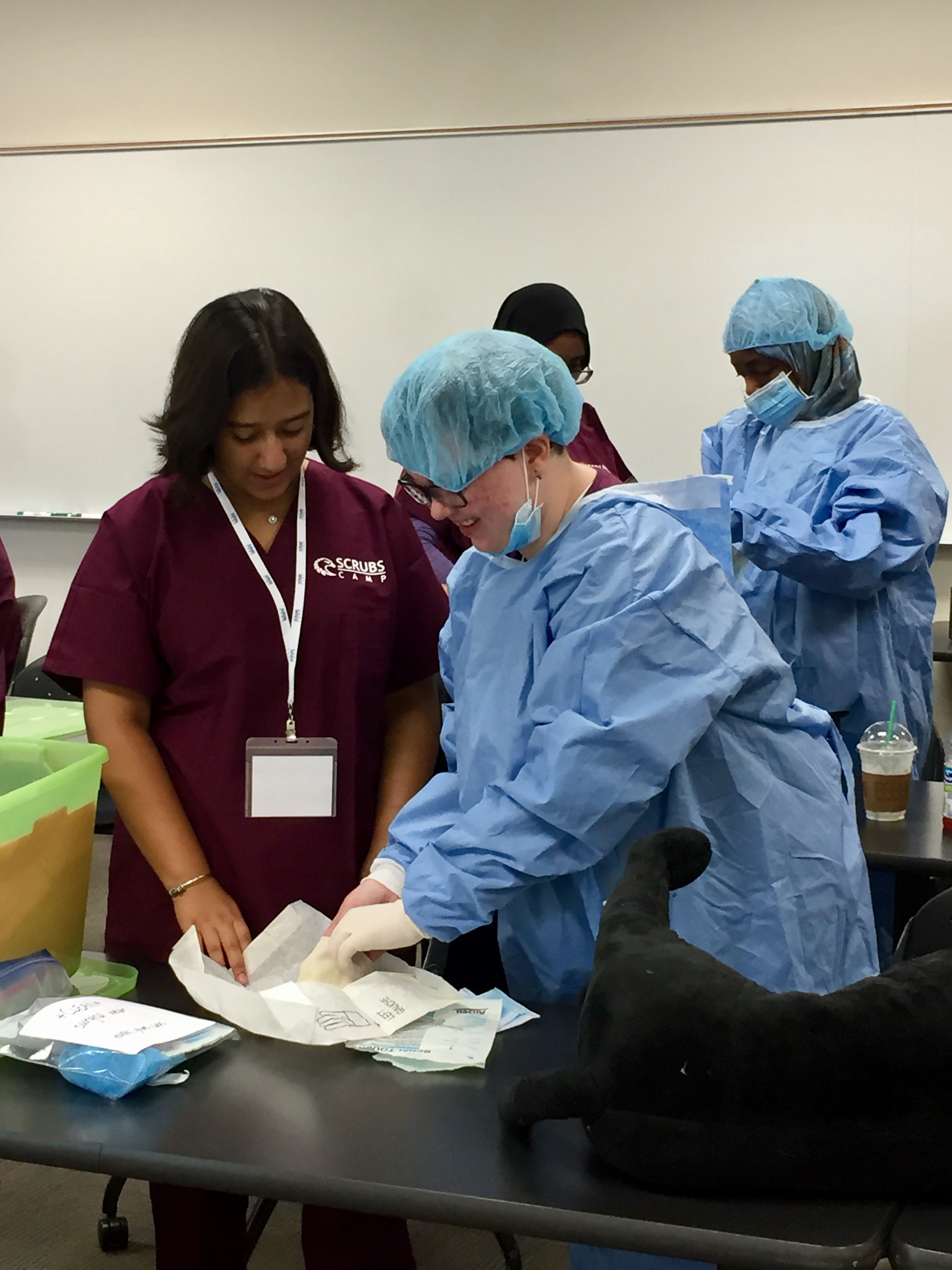
After the overview, it was time to put what they had learned into practice. Plush dogs equipped with mock internal organs served as the “patients.” After assessing their patients, the students determined the animals needed surgical care. They had to “scrub in” for surgery and maintain a sterile environment to provide proper patient care. As students worked in teams to save patients’ lives, they learned about the collaboration, attention to detail, and time management that is necessary in veterinary surgical operations.
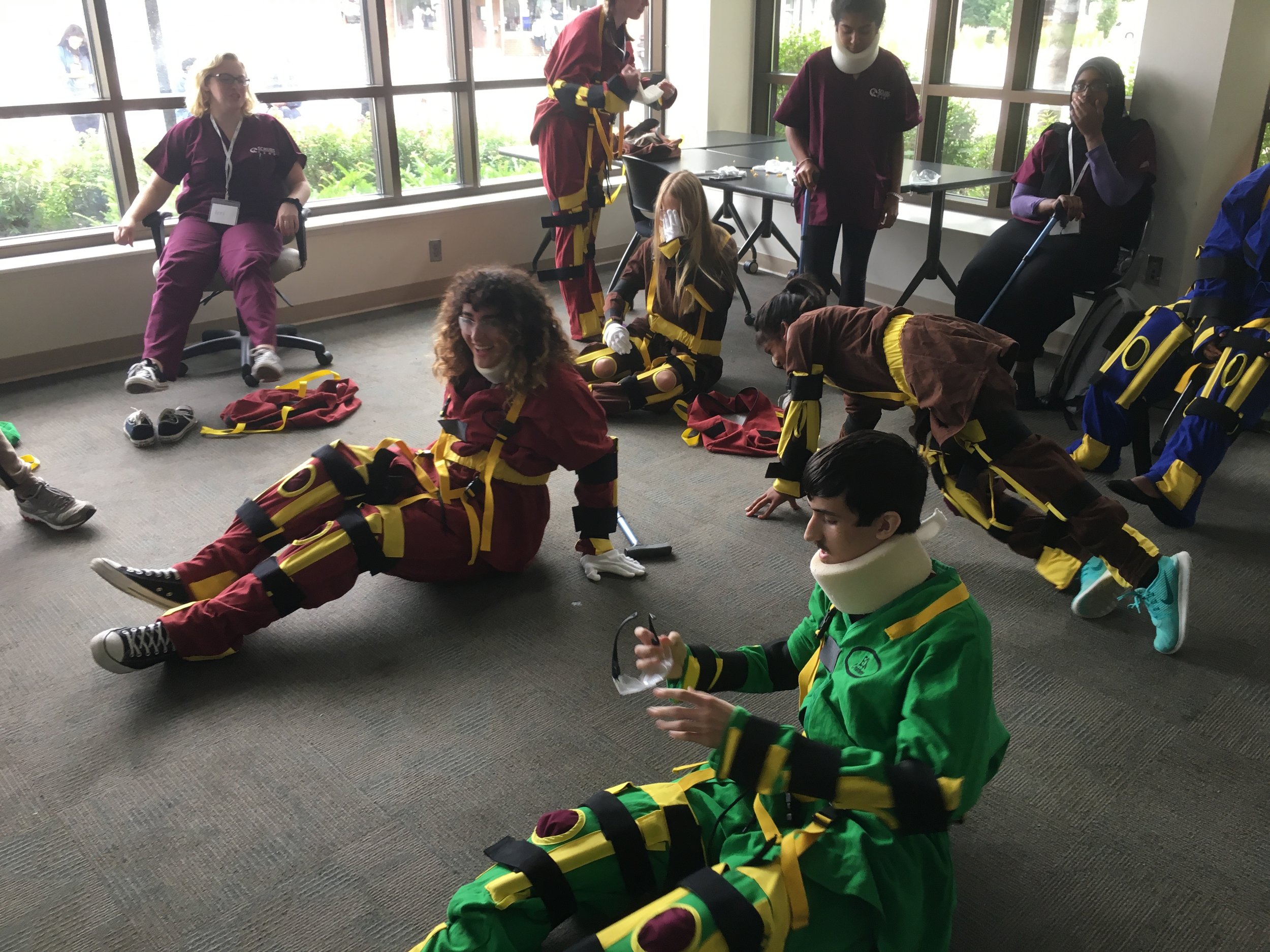
On the third day of Scrubs Camp, participants took part in blocks about medical equipment applications, geriatric care, and sports medicine and rehabilitation. One of the most fun activites of the camp took place in the geriatric care block, with the use of age suits.
Winona State nursing student Emily Jansen led the session, introducing participants to the concept of geriatric care. Students were invited to try on age suits, which were composed of several different aspects. Clouded glasses simulated cataracts, while gloves simulated a loss of touch and struggle with fine motor skills. Neck braces introduced students to lack of mobility, while full-body suits with straps and rods simulated arthritis, hunched backs, and difficulty bending and moving. Students got to experience all these effects of aging before debriefing together.

Students found the experience both challenging and enjoyable. The activity was fun temporarily, but many students expressed frustration at their inability to do things that had previously seemed simple, even unconscious. “Empathy is an essential part of geriatric care,”noted Jansen. “It’s not easy for elderly people to do things we think of as easy. It can be frustrating, especially when working with degenerative diseases, but these people aren’t stupid; they had jobs and lives, and are very intelligent people.”
